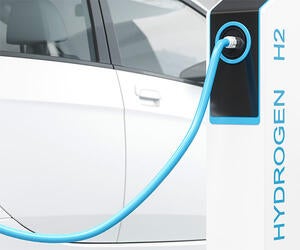How Membrane Technology Is Driving The Commercialization Of Fuel Cells In The Automotive Industry
Industry Articles, United States
Find out how Gore's materials engineering expertise and capabilities can accelerate the commercialization of FCEVs by dramatically improving the performance and reliability of fuel cell stacks and systems.
About the Article
The commercialization of hydrogen as an energy source is critical to the future of clean energy, with fuel cell technology gaining maturity day by day. Within the transportation sector, the proton exchange membrane (PEM) fuel cell stack has the potential to accelerate the commercialization of Fuel Cell Electric Vehicles (FCEVs) by improving the performance and reliability of fuel cell stacks and systems. This technology has many benefits, including high power density, low weight and volume, as well as an attractive operating temperature window that does not require preheating before operation. Compared to other fuel cell technologies, PEM fuel cell stacks and systems account for 64% of the fuel cell market, enabling automakers to offer a broader portfolio of fuel cell-powered products.
However, to achieve economies of scale and gain widespread acceptance, fuel cell stack engineers must partner with membrane technology experts to optimize the PEM, stack, and system for three broad categories: reliable performance, technical support, and supply security. Specifically, engineers must understand the proton conductance, resistance to chemical degradation and mechanical failure, and low gas permeance required for a reliable performance of PEM fuel cells. Engineers must also support customized, fit-for-use needs of automakers, ensuring they have the technical expertise and knowledge to support their components' potential performance tradeoffs.
In this article, Simon Cleghorn, a global product specialist at W. L. Gore & Associates (Gore), investigates the potential of using the PEM fuel cell stack system for automotive applications. While the benefits are promising and automakers should invest in it, the technology needs to be commercially viable and competitive for economies of scale to be realized. Collaboration between fuel cell stack engineers and membrane technology experts is necessary to optimize the PEM, stack, and system for commercialization, including reliable performance, technical support, and supply security for FCEVs. Our reinforced PEM technology, which is based on a combination of highly engineered ePTFE, high-performance ionomers, and proprietary membrane additives, is a solution to significantly reduce the tradeoffs between thinner PEMs and performance, which can compromise the fuel cell's life. In addition to the technology, comprehensive global analysis resources are necessary to support surface science investigations, thermal, mechanical, and other areas to provide holistic technical support. Evidence in this article suggests that PEM fuel cell technology has the potential to achieve commercial success and significantly impact the future of clean energy.
FOR INDUSTRIAL USE ONLY
Not for use in food, drug, cosmetic or medical device manufacturing, processing, or packaging operations.
